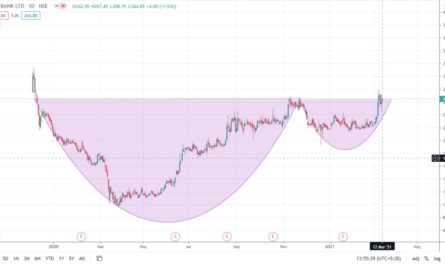In this article, we going to cover “5 TYPES OF TRADING METHODS” we are going to see how to analyze the market and how to approach it with different techniques. let see.
What are the 5 types of trading methods available in trading?
The 5 different techniques available in trading are as follows:
- Investing Method
- Swing Traders
- Breakout Traders
- Retracement Traders
- Scalpers
As far as the market is concerned, traders will be using any one of the 5 methods. Maybe even you will be trading in any one of these methods.
Investing
Now, to begin with, Investing. What everyone thinks is Investing means long-term but it’s not like that. Even to start with trading we need an investment. Every trade is an investment and you should know where to invest.
The basic rule is “Never Invest in Stock, INVEST in a COMPANY” So what does it mean, Investment has to be done in a good company and not in shares. Investing in any random share is better than choosing a company based on the fundamental growth & company management and through “TECHNICAL ANALYSIS” if you find the company will be in buy trend for a longer period of time. Then, you have to invest in that company. Do not buy shares in all the companies for the sake of investment. Hence invest in a company that will give you long-term investment returns.
How to find a Profitable Company?
The first important things is Fundamentals”Fundamental means checking for the company’s administration & their business plans and invest in it. Same time we have to do proper technical analysis which helps you to find out the potential growth of the company for the period of 2-5 yrs.
For Example, When a company’s share value potentially increases from Rs.150 – Rs.500 over a period of time can be determined through technical analysis.
Technical analysis helps to identify the value of the script. So, an investment can be made in a company, when both fundamental and technical analysis is strong. Hence I conclude, never invest in the stock, Invest in a Good Company. 2nd category is “Swing Traders”.
Swning Traders
Swing Traders come in between Investors & Scalpers. Swing does not happen in 1 or 2 days. It minimum takes 1 – 3 weeks. So let me explain to you, who is a swing trader with an example.
Example of Swing Trading
Through technical when you predict a market goes up. We buy at Point A and wait for a period of 10 – 30 days to reach Point B. A trader who buys at point A and waits for a period of time to sell at point B is called a Swing Trader.
Swing trader doesn’t do Position or Long term trade. They buy and sell trades during a contract period of time. ( ex:-10 – 30 days time period).
A swing trader’s important quality is they have to know the trend of the market. A market will never be going in the same direction, it always forms an up & down structure.
A swing trader should be aware of whether a market is in uptrend or downtrend or sideways to do trade. In case, if you are willing to trade based on-trend. You should know the concept of Trend (Uptrend/Downtrend/Sideways).
When the market is in an uptrend, swing traders will place an entry at Higher Low (HL), because as per the Trend concept, the market will reach a new High after HL. Based on this concept they will trade in Shares or commodities.
Swing traders are the ones who place entry in Swing Low & Swing High point and it will take a period of time to reach the target. (Min 10 days – Max 1 month). So, 3rd category is “Breakout Traders”.
Breakout Traders
Who are Breakout Traders? Please review my earlier articles regarding Support & Resistance, to understand Breakout Traders. Let’s say when a market goes down and a candle closes breaking the support line. When a trader places a Sell entry exactly at the closing of the candle are called Breakout traders.
There are major breakout levels in the market. example:- Diagonal Trendline Breakout, Channel Breakout, Support & Resistance breakout, etc. These are different types of bounce back & breakout points available in the market.
Breakout traders are the ones who place entry after the potential breakout point. Breakout traders are normally called aggressive traders. Because of their agility nature, they place an entry once they find a breakout point.
Conservative traders are the ones who mainly trade on the single script with more patience and discipline.
Psychologically when a trader wanted to trade on many scripts and place entry at the breakout points are called Breakout traders.
You are one among Breakout traders, in case you are trading at Support & Resistance breakout, Channel breakout, trendline breakout, etc. And then, 4th category is Retracement Traders.
Retracement Traders
Talking of retracement reminds me of an important person, His name is “Leonardo Fibonacci” He was an Italian mathematician from 1100 AD. His theory was for every positive there will be a certain percentage of negative. We have a saying “For every action, there is an equal and opposite reaction”.
This even applies to the market. So when a market goes up high, there will be a low, and then only the market will reach a new High. Likewise, when a market goes down, there will be a high and then only the market will reach a new low. This was the major rule “Leonardo Fibonacci” has made.
Rather than trading in Breakout point, few people trade in the Retracement Level. (Positive to Negative or Negative to Positive Level)
Example of Breakout Traders
When we predict that a market will go up to 100 points, definitely, there will be a correction of 30 to 40 points which comes down. After a correction of 40 points, if a trader place an entry at that point are called Retracement traders.
There is 2 scenarios in this, let me show you. Few traders use the Fibonacci tool for retracement levels.
For example:- when the market breaks its resistance then it comes again for retracement a trader who places a buy entry at that retracement level is called a retracement trader.
The first scenario is when the market is in a downtrend, on completion of the downtrend a trader places a sell at the correction point.
The second scenario is based on support & resistance when the market breaks the resistance and a trader places a buy entry at the retracement point in both the scenario a trader who buy & sell at the correction point are called Retracement traders.
Psychologically, retracement traders are considered conservative traders because they slightly hesitate to take risks. But aggressive traders never hesitate, they buy or sell after a breakout. So retracement traders are conservative and enter into a market only after they confirm the retest level. Finally, the 5th category is Scalpers.
Scalpers
Most of the traders will do scalping.
Who are Scalpers?
- A trader who closes the trade on the same day, otherwise called Day Trading.
- Scalpers are those who trade between 9.15 am – 3.30 pm in equity market and 9.15 am – 11.30 pm in the commodity market and closes the trade on the same day.
- Swing traders will always buy at low and sell at high. But scalpers will buy and sell within a specified range of swing.
- Scalpers will trade in between the swing many times they buy and sell just to get only 5 to 10 points.
About the 5 categories let me explain you with an example :-
- Bus Route – Starting place in Chennai and the Destination is Coimbatore (CBE). In between, there are numerous bus stops. A person who boards at Chennai may get down either at Vadapalani or Salem or get down at the last destination CBE.
- Likewise, in market a trader should be aware of his entry & exit point. Based on their entry & exit points we will be able to identity what kind of trader he is. If a person boards at Chennai and exits at the next stop Vadapalani are called Scalper.
- Suppose if he waits and exits at Salem he is called Swing trader. Or if he waits to reach his destination and exits at CBE are called Investors.
In the market, it may take up to 6 months to 2 years for an Investor to reach their target. Retracement and Breakout traders are a trading methodology that comes in between the Scalpers and Swing Traders.
Conclusion
Let’s recap on 3 major traders – Scalper traders are those who buy and sell within a swing then we have Swing traders who wait for 10 to 15 days to close their trades and last we have Investors who wait for a longer period of time and end up with the good amount of returns.
So if you are one of the above traders. An important point is, you should have proper knowledge about Time Periods. To explain the Time period, let me give u few explanations. While placing a buy trade and expecting to reach his target the same day. But it will not reach the target before the closing market but the very next day there will be a gap up and the market open price will be our expected target.
Likewise, we place a sell trade expecting to close today which will not happen. But the very next day there will be a gap down and the opening price will be our exact target price or else, after placing an entry we wait for 10 days and then we give up and close the trade, but 15th day it will reach our expected target or else expecting to reach its target within this contract period, but it will happen in the next contract period.
This issue mainly arises because of a lack of knowledge in the TIME PERIODS. So if you are one of the scalpers, swing traders, or investors you be should aware of time frame to do trade.
These are the time frames available in the market:- 1 min, 5 mins, 15 mins, 1 hour, 4 hours, daily, weekly and monthly. Normally in technical analysis, these are the time frames we use for trading.
For each and every time frame we have a respective time period. So when a trader analyses a script in 15 mins time frame he has to wait for its time period to reach its target. If he analyzes a script in a daily time frame he has to wait for its own time period to reach its target.
Most traders face issues because they are not aware of the exact time period for their time frames. A trader expects to reach the target on the same day but it will happen the next day based on the time period or they expect the target on the 3rd day, but it reaches its target on the 5th day.
All this miscalculation happens because of a lack of knowledge in time periods. Once you know the time period then you can decide whether you are a Scalper, Swing Trader, or Investor.
One should follow the Risk Management, Money Management, and Fear and Greed concept of the market to avoid big losses.
If you like this post kindly leave a comment in the comment section so that we can know what your thought about these trading price action trends. For more trading ideas do follow us on




